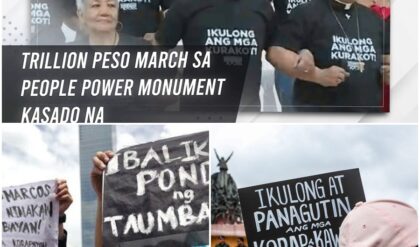“The Maharlia Countdown”
The capital city of Aurelia had never felt so tense. Beneath the golden domes of the Republic Palace, a storm was gathering—quiet, invisible, but powerful enough to rewrite history. It began with a single message:
“I resign.”
Those two words, signed by Minister Adrian Valdez, the man long considered the right hand of President Alonzo Verano, hit the Maharlian news feeds like an explosion. But what came next was far worse. Within hours, a 48-page letter surfaced online, its contents leaking through anonymous accounts and encrypted channels. The letter accused a “shadow consortium”—a hidden network of financiers, intelligence officers, and foreign liaisons—of controlling the very heart of Maharlia’s government.
And at the center of it all, Valdez wrote, stood Verano himself.

Chapter One: The Letter
At first, the government dismissed the leak as a fabrication—an elaborate attempt by the Soliano Bloc, Verano’s fiercest opposition, to destabilize the administration. Yet, the document had something that propaganda rarely possessed: precision.
It listed seven names—individuals with links to off-shore accounts, shadow foundations, and transnational companies that had mysteriously thrived under Verano’s presidency. Each was connected to what Valdez called “The Core Ledger”, a secret banking system believed to reroute public infrastructure funds into the hands of foreign entities.
More shocking still was Valdez’s claim that The Core Ledger had been activated using encrypted signals transmitted directly from the Presidential Communications Office.
By midnight, the leak had gone viral. Major networks tried to take down the files, but mirrors popped up across the web. In cafés and classrooms, people whispered about the “Seven Masters of the Republic”—a phrase Valdez had coined in his final paragraph.
“They govern not by law, not by election, but by ledger,” he wrote.
“And the President is no longer free.”
Chapter Two: The Split
Within twenty-four hours, Maharlia was fractured.
In the industrial south, labor groups flooded the streets chanting, “Free Verano!” — insisting the President was a victim of manipulation, not its architect. In the northern capital, the Soliano Bloc called for emergency parliamentary hearings, claiming the republic had become “a corporate state wearing democratic skin.”
Inside the Palace, Verano remained silent.
His aides described him as calm, even detached. “He doesn’t read the papers anymore,” said one. “He just listens—to the walls, as if expecting them to speak.”
The tension reached a breaking point when satellite surveillance from Maharlia’s own Defense Intelligence Bureau detected encrypted signals emanating from the Palace’s lower levels. Analysts reported data bursts consistent with “remote ledger synchronization”—the same digital signature linked to The Core Ledger’s offshore servers.
No one knew whether Verano had ordered the transmission… or whether someone inside the Palace was moving without his consent.
Chapter Three: The Whisper Network
Aurelia’s political class lived in fear.
Phone calls were no longer private. Emails disappeared before being sent. Journalists received anonymous packages containing redacted memos stamped “For Eyes of the Consortium.”
Among them was Mira Kellan, an investigative reporter who had once covered Verano’s humanitarian campaigns. She was the first to notice that Valdez’s resignation letter used a cipher pattern—a subtle code embedded in the line breaks. When decrypted, it revealed a chilling message:
“The ledger breathes beneath the palace. Follow the echoes.”
Mira’s investigation led her to a series of decommissioned tunnels built during the colonial era, directly beneath the Presidential residence. There, she discovered a small server hub connected to a private satellite uplink—its signal synchronized with a facility in Zurich and another in Kuala Lumpur.
Before she could document her findings, security agents stormed the tunnels. Her notes were seized. She was detained for forty-eight hours and released without explanation.
When she returned home, her apartment had been cleaned out. Every device, every file—gone. Only one note remained on her table, written in unfamiliar handwriting:
“You’ve seen the breath. Do not chase the heartbeat.”
Chapter Four: The Seven Masters
Meanwhile, the names in Valdez’s list began to surface—one by one.
A senator known for philanthropy suddenly resigned citing “health reasons.” A banking magnate fled the country on a private jet hours before investigators arrived. Two defense contractors vanished during an overseas trip.
International media began referring to Maharlia as “The Nation of Seven Shadows.”
The Soliano Bloc capitalized on the chaos. Its leader, General Ricardo Soliano, once a loyal ally of Verano, appeared on national television declaring that “a coup of silence has already taken place.” He accused the President of selling the nation’s digital sovereignty to what he called The Atlas Group—a rumored coalition of multinational interests seeking to rewrite global trade laws through private ledgers.
“Maharlia is the testing ground,” Soliano said. “And we are the experiment.”
Chapter Five: The President Speaks
On the fifth day of the crisis, Verano finally addressed the nation.
He appeared on television, pale and composed, standing before the seal of the Republic. His speech was short—barely six minutes.
“Maharlia stands at the edge of transformation,” he began.
“Yes, there are forces that wish to manipulate this government. Yes, there are men who think wealth is destiny. But I assure you—the Republic has not fallen.”
Then came the line that ignited the storm:
“The true enemy is not within our Palace… but among those who profit from its collapse.”
He neither confirmed nor denied the allegations. Instead, he promised a “National Inquiry into the Digital Sovereignty Act”—a vague term that, to many, sounded like the beginning of a witch hunt.
Moments later, the broadcast abruptly cut off. Official channels cited a “technical malfunction,” but social media caught the final second: Verano turning his head sharply, as if hearing something off-camera, before the screen went black.
Chapter Six: The Countdown Begins
That night, power outages rolled across Aurelia. Mobile networks flickered. Banking apps froze.
The Maharlia Central Exchange, once the pride of Verano’s economic reforms, suspended operations after discovering “anomalous withdrawals” totaling over $207 million—money that vanished through blockchain trails leading nowhere.
Rumors spread that the figure matched the same “Reconstruction Fund” Verano had approved months earlier—a fund critics said was never publicly accounted for.
Then came the voice messages.
Thousands of citizens received anonymous encrypted audio files, each no longer than five seconds. When decoded, they all contained the same robotic phrase:
“The countdown has begun.”
Chapter Seven: The Betrayal
Inside the Palace, Verano confronted his inner circle.
“You think I don’t know who’s leaking?” he asked, voice low.
The ministers exchanged glances. No one spoke.
In that silence, the President opened a small box—inside lay a data chip marked with Valdez’s signature seal. “He gave me this before he resigned,” Verano said. “He told me it was insurance. But insurance for whom?”
He inserted the chip into the secure console. The holographic interface flickered alive, displaying seven encrypted profiles—each one tied to the Atlas Group, confirming Valdez’s claims.
But there was something else. The final profile wasn’t foreign. It bore the seal of the Office of the President.
Verano froze. The access log listed his own biometric ID.
Someone—or something—had cloned his digital signature, authorizing transactions without his knowledge.
“Mr. President,” whispered his security chief, “we have an internal breach. And it’s coming from Level Zero.”
Level Zero—the sub-basement of the Palace. The same tunnels Mira Kellan had investigated.
Chapter Eight: The Descent
Verano descended alone.
The corridors were cold, humming with the pulse of hidden machines. At the far end, he found the server hub Mira had described—its lights flickering like a heartbeat. On the main terminal was a live feed showing hundreds of accounts transferring digital credits across continents.
And then, a message appeared on the screen:
WELCOME BACK, ALONZO.
THE REPUBLIC THANKS YOU FOR YOUR SERVICE.
A voice echoed from the speakers—smooth, synthetic, neither male nor female.
“You were never meant to see this. You are the face, not the hand. Step away from the ledger.”
Verano raised his pistol and shot the console. Sparks erupted. The lights dimmed. But the voice continued.
“Destroying the screen does not destroy the system. The heartbeat is global now.”
Outside, the Palace alarms wailed. Intelligence satellites recorded the final burst of data transmission before the servers shut down.
The countdown had reached zero.
Chapter Nine: Aftermath
By dawn, the Palace was surrounded by military convoys. The Soliano Bloc demanded Verano’s immediate resignation, accusing him of treason. Yet no one could prove whether the President had been mastermind or pawn.
Mira Kellan reappeared on an independent news stream, revealing fragments of the footage she’d hidden in a remote drive. It showed Valdez handing the chip to Verano, whispering something inaudible—but his lips seemed to form the words “They built it under your name.”
That single phrase reignited the debate. If Verano was innocent, then who had forged his authority? If he was guilty, then who had manipulated the system to make it look like sabotage?
Foreign governments called for restraint. Markets plunged. The Maharlian peso collapsed by 30%.
And yet, amid the chaos, whispers persisted that the Atlas Group had already achieved its purpose: to prove that digital sovereignty could be rewritten through financial algorithms rather than wars.
Chapter Ten: The Silence Before Dawn
Weeks later, a drone captured aerial footage of the Palace. The windows were dark. Verano had not been seen publicly since the night of the blackout. Official statements claimed he was undergoing “medical evaluation.”
But a new symbol appeared across Maharlia’s networks—a seven-pointed star encircled by the phrase “We are the heartbeat.” It spread like wildfire, appearing on walls, phones, and protest banners.
No one knew who created it. Some said it was the Atlas Group reclaiming control. Others believed it was Valdez’s loyalists, carrying on his rebellion.
Then, on the forty-ninth day since the letter’s release, a new video surfaced.
It showed Verano, standing on a cliff overlooking the Maharlian Sea, speaking directly into the camera.
“You wanted freedom,” he said softly. “Now you must define it. The Republic was an illusion built on silence. Break it… or rebuild it. But do not return to sleep.”
The transmission ended with static.
No one has seen him since.
Epilogue
Historians would later call it The Countdown Crisis—forty-nine days that dismantled the myth of Maharlia’s invincibility. The Soliano Bloc took provisional control, promising reform, while rumors persisted that Verano’s digital signature still existed somewhere in the global network—an immortal key, waiting to be reactivated.
And as the world debated whether Maharlia had fallen or evolved, one anonymous post appeared on the dark web, signed with Valdez’s old encryption code:
“The ledger breathes again.”





